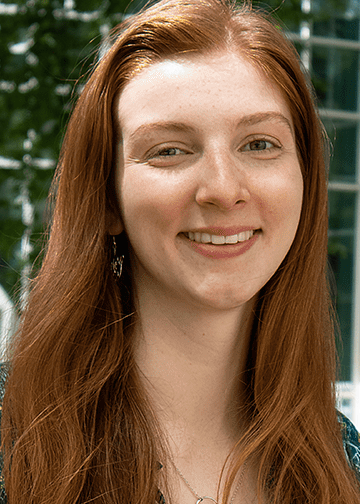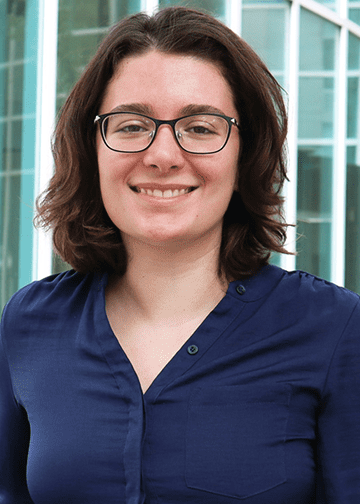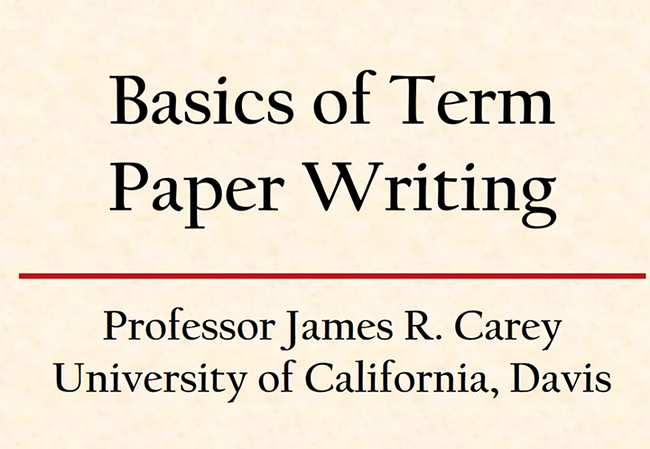
This year students in Carey's classrooms swept all three awards in the Science, Engineering and Mathematics (SEM) category of the 2023 Norma J. Lang Prize for Undergraduate Information Research.
Jenna Schafer won first place with a $1000 prize; Sarah Shores, second, $750; and Neha Gondra, third, $500. Maram Saada, a former student in Carey's longevity class who won the 2022 first-place SEM award, also won this year's Arts, Humanity and Social Sciences (AHSS) category.
Carey students are frequent winners, but this is the first year his students won all three awards in the SEM category. Since 2020, a Carey student has won eight of the 13 awards, including four consecutive first-place SEM awards.
The Lang Prize, launched in 2017 to encourage the use of library resources and to reward the best research papers, memorializes Norma J. Lang (1931-2015), professor emerita of botany, who taught at UC Davis from 1963 to 1991.


Shores submitted her paper on “Androgen Insensitivity Syndrome: Differences of Sex Development.”
Gondra's third-place paper, Evaluating the Influence of the Mediterranean Diet on Reducing Cardiovascular Disease Risk Factors in Obese Individuals, dealt with obesity.
The Basics. Carey, a member of the UC Davis faculty since 2008 and an international award-winning teacher, instructs his students how to research topics, use style sheets, and structure documents.

Carey tells his students that they need to consider their research term paper requirement, not as merely "a writing assignment," but as "a production concept" involving a number of writing concepts and components:
- Writing video series. Carey mandates that all his students view the 13-part video playlist he produced titled “How to Write a Research Term Paper.” The playlist—viewing time totals about an hour--covers technical aspects of term paper production, including best practices in word processing and typography as well as ethical writing (no plagiarism), researching, framing, drafting, editing, proofing and finalizing (Writing Instruction Playlist).
- Model papers. Just as all researchers can view example papers in journals, students also need models, too, Carey believes. He posts a term paper example, mocked up from his own writing, as well as links to all the award-winning student papers in the Lang Prize competition and such UC Davis student publications as Prized Writing and Aggie Transcripts.
- Technical fluency. Carey requires all students to learn best practices in both typography and word processing. Students must use exact 15-point spacing (not single or double), 11-point California FB typeface (not Times Roman), 1.5-inch page margins (for shorter lines) and, using style sheet tools, must create four formatting codes that cover 98 percent of the formatting—heading level 1, subheading level 2, body text and hanging paragraph. Submitted papers are not only technically uniform, but also possess an aesthetic beauty that Carey feels either consciously or sub-consciously inspires students to take pride of ownership that carries over to their efforts in other aspects of their paper. Carey requires his students to read and follow Butterick's Practical Typography.
Storytelling. Carey stresses storytelling as the overarching, unifying concept for writing a term paper, the basics of which are that the story must have structure (a beginning, a middle and an end), a voice (the student's) and character development (main theme or thread). The process of story development is inextricably linked to their paper development; once the story begins to form in a student's head and then on paper, the narrative flows more clearly, succinctly and with much less effort than a paper containing information “dumps.” - Writing and editing. Although Carey emphasizes the importance of producing clear, succinct and technically correct prose, he tells his students that this is only a part of the larger process concerned with a paper's structure and congruency.
Congrats to the first-place SEM winners from the Carey classrooms since 2020:
- 2020: Jessica Macaluso, “The Biological Basis for Alzheimer's Disease.”
- 2021: Barry Nguyen, “Allostasis: The Fundamental Biology and Implications for Social Standing and Longevity.”
- 2022: Maram Saada, “Huntington's Disease: Etiology, Research Models and Treatment.”
- 2023: Jenna Schafer, "Timeout with Torpor: History, Biology and Future Medical Applications of a Survival Strategy."
Carey's teaching methods shine light on what innovative, dedicated and detailed instruction can do to anyone struggling with "How do I write a term paper?"
And sometimes there's a monetary reward and campuswide recognition.
Attached Images:
